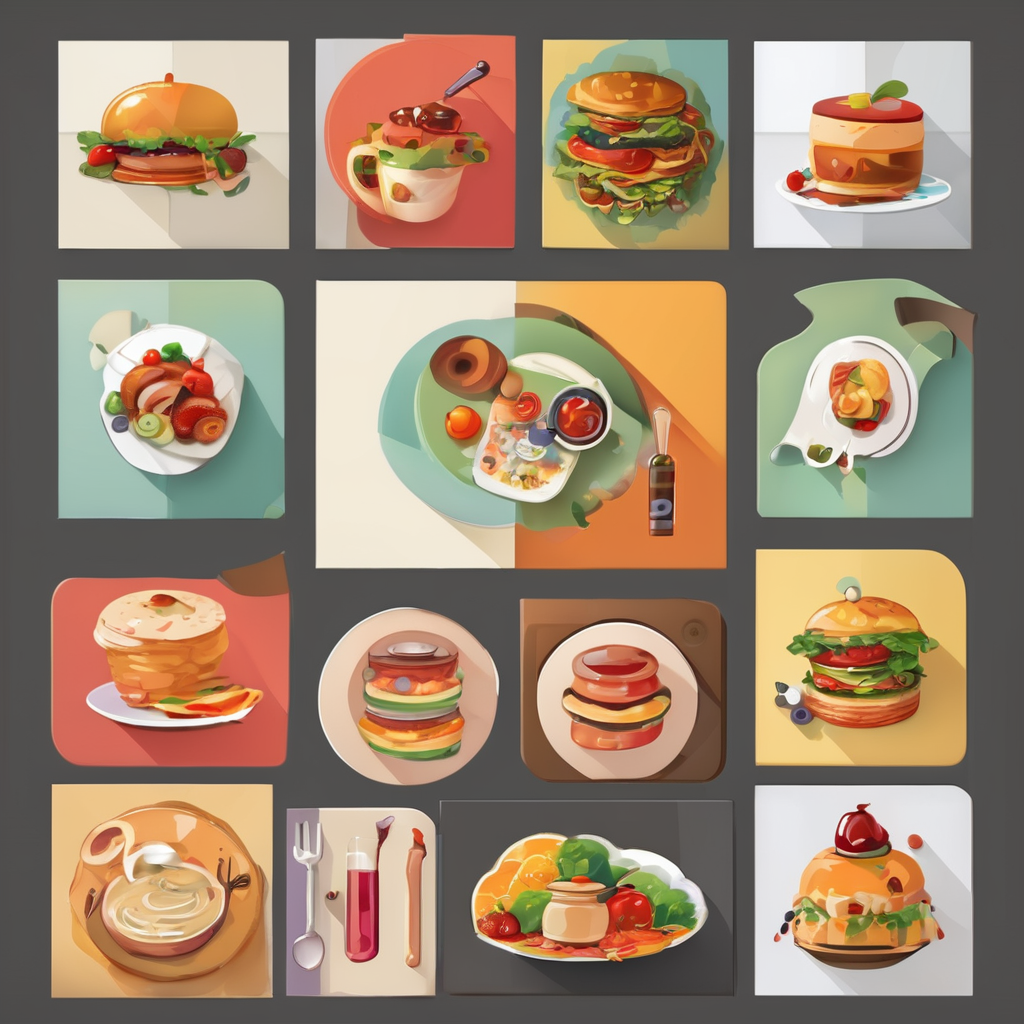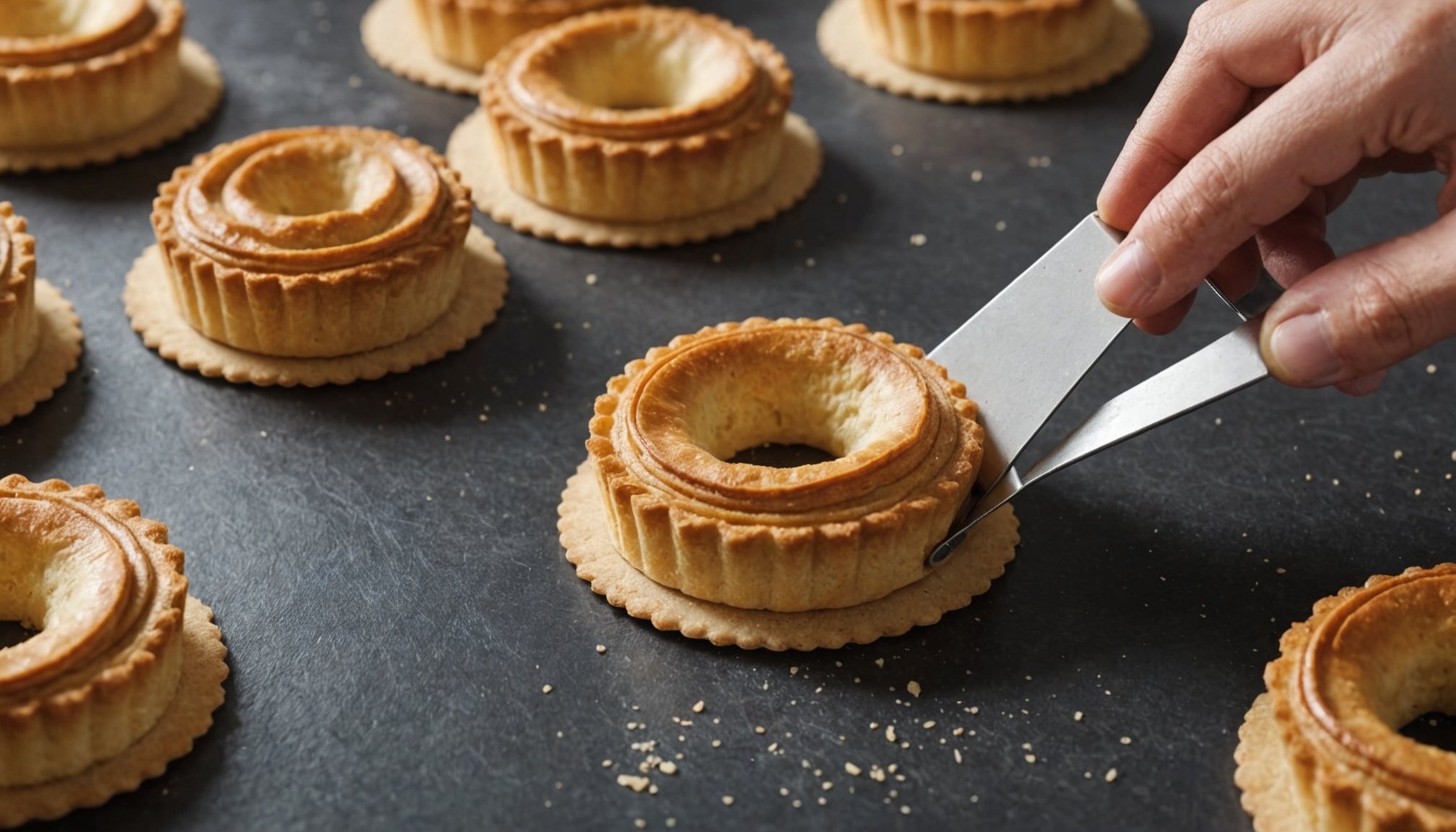Overview of Pastry Cutter Materials
When selecting a pastry cutter, the material is a crucial factor influencing both durability and performance. Pastry cutter materials vary widely, each offering unique benefits and serving different baking needs. Materials such as stainless steel, plastic, and silicone are commonly used due to their distinct advantages.
The choice of durable pastry cutters stems from understanding their material properties. Stainless steel, for instance, is renowned for its robustness and ability to maintain sharpness, making it a favourite for serious bakers seeking high-performance tools. Plastic cutters, on the other hand, are popular for their lightweight nature and affordability, albeit with some trade-offs in longevity. Silicone offers flexibility and non-stick qualities, ideal for delicate doughs and maintaining shape during heat exposure.
Additional reading : Discover the Best Electric Can Opener for a Seamless Edge Finish
Depending on the baking context—be it frequent use in a professional setting or occasional home use—the needs will differ. Stainless steel may suit environments where maximum durability and efficiency are paramount. In contrast, home bakers might prefer lightweight pastry cutters for ease of handling and cost-efficiency. Each material presents unique performance features, thus selecting the right cutter involves balancing durability, cost, and user comfort.
Understanding these materials ensures informed choices for optimal results in the kitchen.
Topic to read : Discover the Ultimate Durable Material for Your Cake Decorating Piping Bags!
Stainless Steel Pastry Cutters
Stainless steel pastry cutters stand out as top contenders in the realm of high-performance pastry tools. Known for their strength and longevity, they are prized in professional and home kitchens alike. The metal used in these kitchen tools provides exceptional cutting efficiency, ensuring that even tough dough does not stand a chance against their sharp edges. This durability and precision make stainless steel a go-to material for those needing reliable and enduring kitchen equipment.
When compared to other materials like plastic and silicone, stainless steel offers unparalleled durability. While plastic cutters may appeal due to their lightweight nature and silicone for flexibility, neither can match the inherent robustness of metal kitchen tools. Stainless steel’s ability to remain unaffected by frequent use or accidental drops adds to its desirability.
To maintain stainless steel pastry cutters in pristine condition, minimal effort is required. Regular washing with mild soap and thorough drying will prevent rusting and maintain their shine. Occasionally polishing them can help preserve the aesthetic appeal. Following proper storage practices, such as keeping them in a dry place, will extend their lifespan. Investing in stainless steel tools involves acknowledging their superior durability, cutting efficiency, and easy maintenance.
Plastic Pastry Cutters
Plastic pastry cutters excel as plastic kitchen tools due to their lightweight nature and affordability. These characteristics make them ideal for beginners and casual bakers who prioritize ease of use. While they undoubtedly provide a more cost-effective option compared to metal alternatives, they come with a few cautions regarding durability.
Plastic material can be prone to wear and tear with frequent usage, especially when dealing with tougher dough. Despite this, their lightweight design offers a significant advantage in day-to-day baking where handling ease is paramount. To make the most of plastic pastry cutters and enhance their longevity, proper care is essential.
Best practices for maintaining these cutters include gentle cleaning with warm soapy water, avoiding harsh scrubs that might scratch or degrade the material. Storing them away from high heat or direct sunlight can also prevent warping. While not as long-lasting as their stainless steel counterparts, with the right care, plastic pastry cutters can serve effectively in many basic tasks within the kitchen. Their cost-effectiveness and ease of use keep them in high demand among enthusiastic home bakers.
Silicone Pastry Cutters
Silicone kitchen tools have garnered significant attention for their unique flexibility and non-stick properties. These heat-resistant materials are especially beneficial in environments where temperature sensitivity is a concern, such as working with delicate doughs that require maintaining precise shapes. Unlike stainless steel or plastic, silicone pastry cutters effortlessly glide through dough without sticking, making them invaluable in tasks that demand precision and delicacy.
Silicone pastry cutters excel in scenarios where other materials may falter. For instance, their flexible nature allows them to adapt to various shapes, an advantage over more rigid counterparts. Additionally, silicone cutters are resilient to high temperatures, alleviating concerns about warping or degradation during baking sessions.
Recommendations for optimal usage involve ensuring compatibility with the intended baking context. For bakers frequently dealing with sticky ingredients or intricate designs, silicone’s non-stick attributes provide a clear edge. It’s essential to maintain silicone tools through proper cleansing—gentle washing in warm, soapy water extends their lifespan and preserves their performance. Although they may not possess the sheer cutting power of metal, silicone flexible pastry cutters offer a unique blend of adaptability and gentleness, satisfying specific baking requirements effectively.
Performance Comparison of Materials
When evaluating pastry cutter performance, material choice is a pivotal factor. Different materials excel in various aspects, and understanding these can significantly influence baking outcomes. Stainless steel cutters are celebrated for their cutting efficiency and durability, making them ideal for consistent and heavy use. On the other hand, plastic is noted for its affordability and ease of handling, though it doesn’t endure as long as metal. Silicone cutters bring unmatched flexibility to the table, offering a non-stick experience that is perfect for intricate dough patterns.
Material comparison also extends into specifics such as user comfort and price points. User reviews frequently highlight stainless steel for its robust handling, gaining favour among professionals who prize longevity. However, home users often appreciate the lightweight nature of plastic cutters for simpler tasks. Silicone, while not the toughest, is praised for its adaptability in temperature-sensitive applications, often preferred by bakers dealing with delicate pastes.
In consultations with experts, stainless steel typically surfaces as the best material for high-stakes baking due to its reliability. However, for budget-friendly or light-duty purposes, users lean towards plastic cutters, while silicone remains a top choice for versatility in precise culinary artistry.
Visual Examples and Product Recommendations
Selecting the ideal pastry cutter can be greatly influenced by visual examples and product insights. Understanding the design features and benefits across top pastry cutter brands is crucial.
Visual showcases highlight the diverse forms and efficiency of cutters available on the market. With metal kitchen tools, for example, the precision engineering of stainless steel designs can be visibly appreciated, showcasing their robust and high-performance attributes. Consider products like OXO’s Good Grips Stainless Steel cutter, celebrated for ergonomic handles and sharp blades.
In the realm of plastic kitchen tools, models like Norpro’s Grip-EZ Pastry Blender are excellent cost-effective options for newcomers, combining intuitive design with affordability. Effective lightweight pastry cutters inspire confidence without sacrificing ease of use.
For bakers interested in flexibility, silicone kitchen tools such as the Tovolo Silicone Pastry Mat are fundamental. These flexible pastry cutters practically demonstrate non-stick properties, ideal in various dough manipulations.
When choosing the best-selling pastry tools, consider individual needs: professional-grade durability or simple home-use tools? Performance features should align with personal baking contexts, while product recommendations from seasoned bakers and enthusiasts offer valuable insights. Being visually informed assists in making educated decisions, promoting satisfaction in everyday culinary endeavours.

